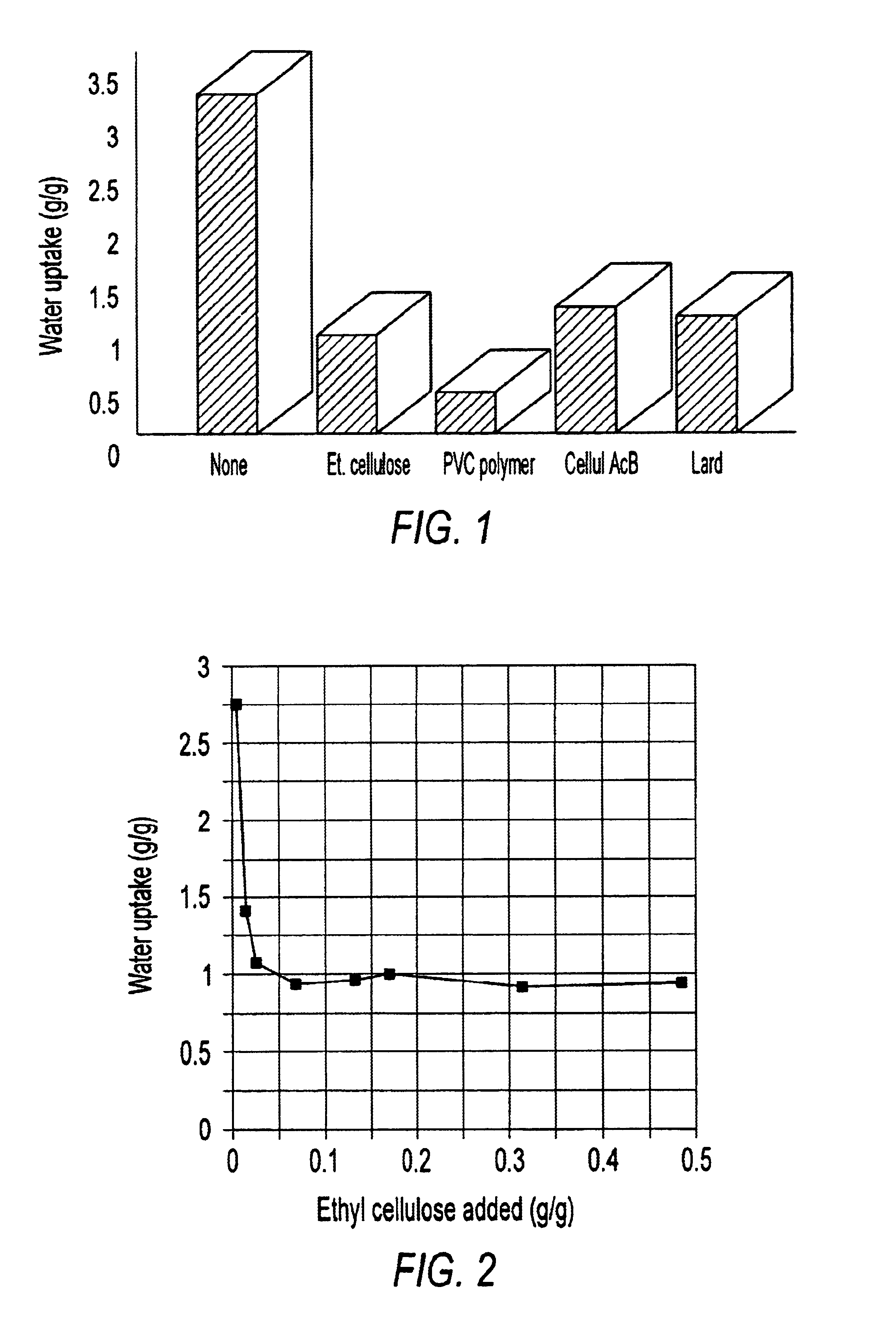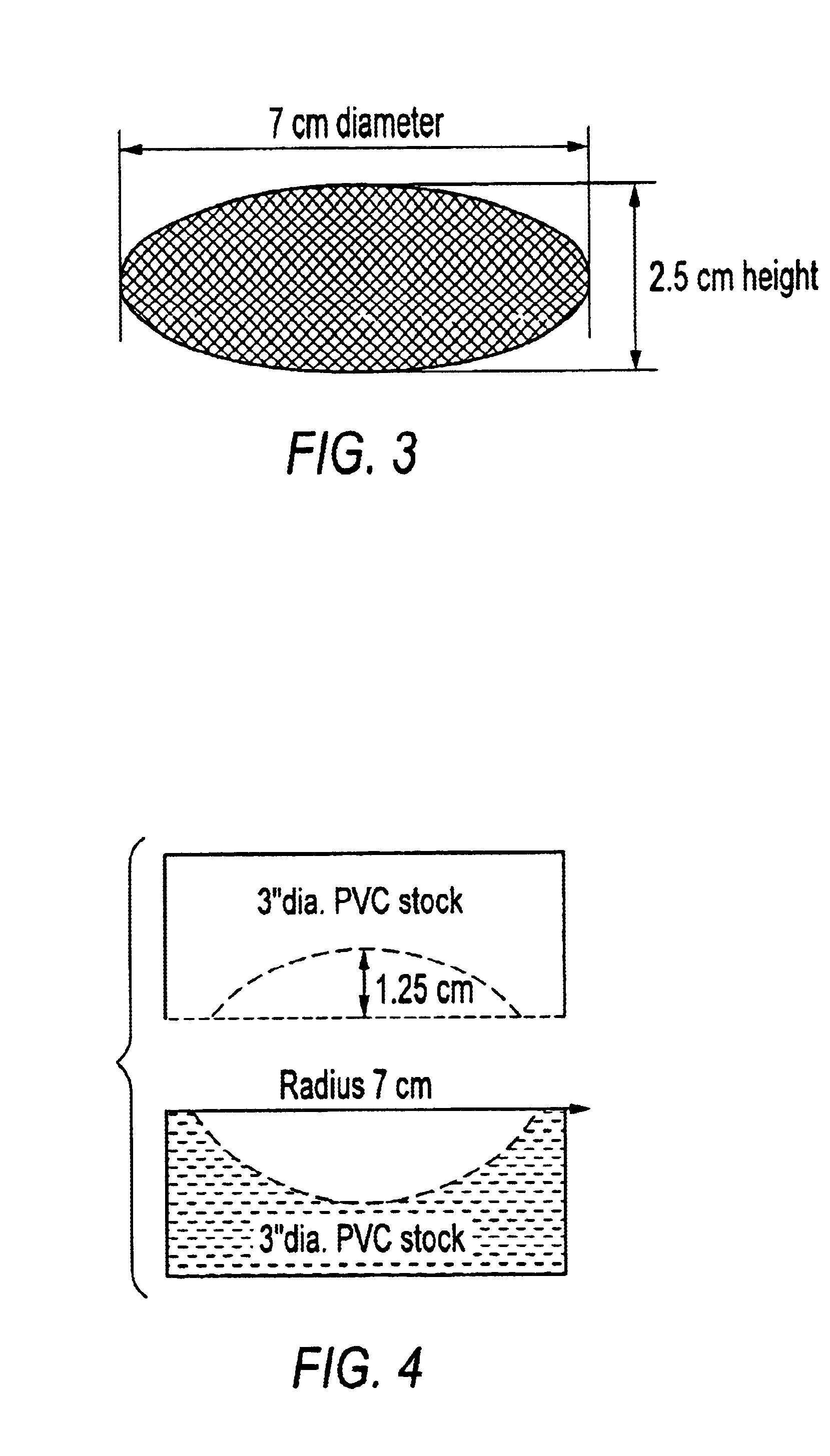Apparatus and method for in situ burning of oil spills
- Summary
- Abstract
- Description
- Claims
- Application Information
AI Technical Summary
Benefits of technology
Problems solved by technology
Method used
Image
Examples
experimental examples
Several criteria were used to initially assess the performance of various designs. These criteria included: (1) uptake of oil and water while floating on an oil-water interface and during burning, (2) tolerance to burning, (3) ability to maintain structural integrity and float for 7 days, and (4) efficacy in burning a 1-mm oil slick. The methods for measuring these criteria are as follows.
1. Measuring Basic Criteria.
1.1 Uptake of oil and water. To measure the relative uptake of oil and water, wicks were weighted and then placed in a 600 ml beaker containing 400 ml tap water and sufficient South Louisiana Sweet crude oil or diesel fuel to provide a slick thickness of 2-mm. After 2 hours, the devices were removed, placed in tared 500 ml widemouth jars, and the weight after adsorption measured to determine uptake of both oil and water. To determine the amount of oil absorbed, a wick was then chopped into a number of pieces and mixed with 250 ml of tetracholorethylene (TCE). The jar was...
PUM
 Login to View More
Login to View More Abstract
Description
Claims
Application Information
 Login to View More
Login to View More - R&D
- Intellectual Property
- Life Sciences
- Materials
- Tech Scout
- Unparalleled Data Quality
- Higher Quality Content
- 60% Fewer Hallucinations
Browse by: Latest US Patents, China's latest patents, Technical Efficacy Thesaurus, Application Domain, Technology Topic, Popular Technical Reports.
© 2025 PatSnap. All rights reserved.Legal|Privacy policy|Modern Slavery Act Transparency Statement|Sitemap|About US| Contact US: help@patsnap.com



